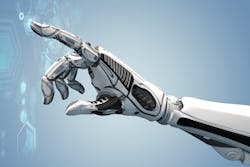Enterprises worldwide must constantly evolve if they want to remain competitive—there is no way around it. Despite knowing this, countless executives feel that making meaningful changes to their companies’ day-to-day operations is too complicated. Maybe you’re one of those executives, juggling the pros and cons of implementing a new technology that you know nothing about, which touts such benefits as increased productivity and cost reduction, but feels intimidating to implement.
A workflow automation solution is probably near the top of your list. However, most workflow automation tools abide by a rules-based system; these rules are largely simple “if-then” statements hard-coded by humans. But predefined rules no longer cut it because AI automation enables both speed and scale, allowing businesses to automate a much larger number of processes. Before we get into the official checklist for automating workflows, let’s explore what AI-enabled automation brings to the table.
There are three distinct elements of a chain of autonomy:
- Perceiving patterns from data
- Deciding how to act based on this perception
- Acting on the decision made
Each of these elements can be powered by AI and machine learning models to make real-world conclusions, even when the real-world data has never been seen by the model before. Through machine learning, the model continually learns over time to ensure it’s perceiving data correctly, making the right decisions, and carrying out the actions properly. If so, the behaviors are reinforced. If not, they are de-emphasized so that better outcomes can be created in the future.
And thus, the Perceive→ Decision → Action cycle repeats continuously.
For example, let’s say you run a bank that processes thousands of car loan applications. Rather than having your employees sift through ungodly amounts of paperwork—and potentially make numerous errors—AI automation can speed up the entire process. Here’s a stripped-down version of how it might work:
- The model can perceive existing image data, such as faces and fingerprints, to confirm an applicant’s identity.
- Then, the model can decide whether to approve the loan or not based on the applicant’s identity.
- Finally, the model can act by generating a response to the application, such as kicking off other automated processes to create a new account for the applicant.
Like we said before, this process does not rely on a rigid rules-based system created by humans. Instead, AI automation streamlines workflow processes, allowing your employees to focus their energy on the tasks that can’t currently be automated.
A Checklist for Automating Workflows
Now that we’ve discussed AI-enabled workflow automation, let’s go over a checklist for automating workflows to ensure your business doesn’t come across any adoption roadblocks. These items may seem a little obvious at first glance, but following this approach will make all the difference when measuring your success.
1. Identify clear goals
What are you hoping to achieve with AI-enabled workflow automation? Are you trying to reduce costs? Improve communication? Increase customer engagement? Get rid of workflow redundancies? If you’re a business owner, think about which processes are causing your employees the greatest degree of difficulty, even the ones you think give your business a competitive advantage.
2. Define responsibilities
Everybody on your team has a role to play beyond what’s in their job description. Each and every one of them needs to own a facet of the business process automation and make sure things are running smoothly. They also need to be in charge of keeping track of their respective key performance indicators.
3. Ensure everyone is on the same page
Workflow automation only succeeds when everyone in the enterprise is involved. Everyone—and we mean everyone—needs to be on the same page about switching from traditional methods to modern automated methods. Ultimately, you want a company culture that embraces automation rather than fears it. This means you need to clearly communicate expectations with your staff about the role of AI-enabled automation in everyday workflows.
4. Determine key performance indicators (KPIs)
You’ve laid out some predetermined goals before implementing AI automation in your organization’s workflows, but now you need to dig into the specifics of what you actually want to accomplish. For example, once you start automating workflows, what is the average process time to completion versus the same task using traditional methods? Or what are the new customer conversion rates after two months of training the model on new data? Decide what success should look like and how it will be measured.
5. Assess
Now that you’ve put your plan into action, you need to regularly check in on how things are going. Is your model perceiving the data correctly? Is it making the right decisions and properly acting on those decisions? Do the goals you laid out still make sense, and are you meeting your KPIs? And what about the people involved—is everyone still on board? Implementing new technology often requires a little bit of trial and error, and you need to be ready to adjust as your project evolves.
The benefits of AI-enabled workflow automation are numerous. Not only does it eliminate menial tasks, but it allows your business to innovate and remain competitive without having to reduce headcount. With AI automation, you are playing the long game for a more prosperous enterprise with a leg up on the competition.
Learn more about SparkCognition's AI solutions here.
Sponsored by:

